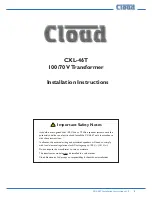
2
MDS 4710/9710 Technical Manual
MDS 05-3305A01, Rev. E
1.2 Applications
Point-to-Multipoint, Multiple Address Systems (MAS)
This is the most common application of the transceiver. It consists of a
central master station and several associated remote units as shown in
Figure 2
. A MAS network provides communication between a central
host computer and remote terminal units (RTUs) or other data collection
devices. The operation of the radio system is transparent to the computer
equipment.
Often, however, a radio system consists of many widely separated
remote radios. A point-to-multipoint or SCADA (Supervisory Control
and Data Acquisition) system might be utilized for automatic, remote
monitoring of gas wells, water tank levels, electric power distribution
system control and measurement, and so on.
The radio system can replace a network of remote monitors currently
linked to a central location via leased telephone line. At the central
office of such a system, there is usually a large mainframe computer and
a way to switch between individual lines coming from each remote mon-
itor. In this type of system, there is a modulator/demodulator (modem)
at the main computer, and at each remote site, usually built into the
remote monitor itself. Since the cost of leasing a dedicated-pair phone
line is quite high, a desirable alternative is to replace the phone line with
a radio path.
Figure 2. Typical MAS Point-to-Multipoint Network
I
D
I
A
G
13.8
VDC
P
W
R
+
HOST SYSTEM
REMOTE RADIO
SWC OFF
RTU
RTU
RTU
RTU
I
D
I
A
G
13.8
VDC
P
W
R
+
I
D
I
A
G
13.8
VDC
P
W
R
+
I
D
I
A
G
13.8
VDC
P
W
R
+
I
D
I
A
G
13.8
VDC
P
W
R
+
RTU
MDS MASTER
STATION
CONTINUOUSLY
KEYED
REMOTE RADIO
SWC OFF
REMOTE RADIO
SWC OFF
REMOTE RADIO
SWC OFF
REMOTE RADIO
SWC OFF










































